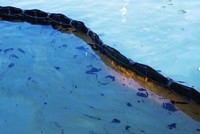Advertisement
Grab your lab coat. Let's get started
Welcome!
Welcome!
Create an account below to get 6 C&EN articles per month, receive newsletters and more - all free.
It seems this is your first time logging in online. Please enter the following information to continue.
As an ACS member you automatically get access to this site. All we need is few more details to create your reading experience.
Not you? Sign in with a different account.
Not you? Sign in with a different account.
ERROR 1
ERROR 1
ERROR 2
ERROR 2
ERROR 2
ERROR 2
ERROR 2
Password and Confirm password must match.
If you have an ACS member number, please enter it here so we can link this account to your membership. (optional)
ERROR 2
ACS values your privacy. By submitting your information, you are gaining access to C&EN and subscribing to our weekly newsletter. We use the information you provide to make your reading experience better, and we will never sell your data to third party members.
Analytical Chemistry
Crude Structure
Energy: Researchers observe liquid crystals in crude petroleum for the first time
by Sarah Webb
July 13, 2010

For the first time, researchers have observed naturally-occurring liquid crystals within the heavy fractions of crude oil (Energy Fuels, DOI: 10.1021/ef100376t). Studying these partially-ordered structures could provide scientists with new insights into petroleum's phase transitions and help them better understand how oil degrades at sea.
Scientists had previously found liquid crystals within purified petroleum products, but not within crude oil. Still John M. Shaw and his colleagues at the University of Alberta in Canada had clues that they might be present in asphaltenes, a crude oil component that contains myriad compounds including high molecular-weight polyaromatics. In a previous study, they had found that these heavy oil components had more than one phase at room temperature. This more complicated phase behavior suggested an intermediate phase between liquid and solid, possibly liquid crystals.
So the researchers went looking for liquid crystals in asphaltenes precipitated from Canadian, Mexican, and Saudi Arabian crude samples. Heavy crude oil components such as asphaltenes are opaque to light, even infrared, but are easy to see in polarized light, Shaw says. When the scientists shined cross-polarized light on their samples under a microscope, they saw Maltese cross structures up to 100 µm in diameter, a telltale sign of liquid crystals.
Discovering liquid crystals within a complex mixture such as crude oil is unusual, says Drew Pomerantz, a research scientist at the oilfield services provider Schlumberger in Cambridge, Mass., because liquid crystals typically appear in pure synthetic compounds or in much simpler mixtures, such as glycolipids. But "it doesn't surprise me," says Russell Chianelli of the University of Texas, El Paso: The planar structure of the oil's polyaromatic components should allow them to stack into larger, ordered structures
At this point, Shaw describes his team's results as a "cool observation." But he hopes that ongoing work to identify the liquid crystals' chemical composition and to determine the percentage of crystals within crude oil will move the work closer to industrial applications.
That data could help with the cleanup of future oil spills, Texas' Chianelli says. The tar balls that form at sea during a spill and then wash ashore are largely made of asphaltenes. More data on the balls' composition and phase behavior, he says, could help scientists better understand their structure and how microbes degrade them over time.





Join the conversation
Contact the reporter
Submit a Letter to the Editor for publication
Engage with us on Twitter